 收藏該雜志
收藏該雜志
同大類學(xué)科其它級別期刊:
中科院 1區(qū) 期刊 JCR Q1 期刊 中科院 2區(qū) 期刊 JCR Q2 期刊 中科院 3區(qū) 期刊 JCR Q3 期刊 中科院 4區(qū) 期刊 JCR Q4 期刊Plos Computational Biology SCIE
國際簡稱:PLOS COMPUT BIOL 參考譯名:Plos 計(jì)算生物學(xué)
主要研究方向:Environmental Science-Ecology 非預(yù)警期刊 審稿周期: 32 Weeks
《Plos 計(jì)算生物學(xué)》(Plos Computational Biology)是一本由Public Library of Science出版的以Environmental Science-Ecology為研究特色的國際期刊,發(fā)表該領(lǐng)域相關(guān)的原創(chuàng)研究文章、評論文章和綜述文章,及時(shí)報(bào)道該領(lǐng)域相關(guān)理論、實(shí)踐和應(yīng)用學(xué)科的最新發(fā)現(xiàn),旨在促進(jìn)該學(xué)科領(lǐng)域科學(xué)信息的快速交流。該期刊是一本開放期刊,近三年沒有被列入預(yù)警名單。該期刊享有很高的科學(xué)聲譽(yù),影響因子不斷增加,發(fā)行量也同樣高。
- 2區(qū) 中科院分區(qū)
- Q1 JCR分區(qū)
- 637 年發(fā)文量
- 3.8 IF影響因子
- 開放 是否OA
- 138 H-index
- 2005 創(chuàng)刊年份
- Monthly 出版周期
- English 出版語言
PLOS Computational Biology features works of exceptional significance that further our understanding of living systems at all scales—from molecules and cells, to patient populations and ecosystems—through the application of computational methods. Readers include life and computational scientists, who can take the important findings presented here to the next level of discovery.
Research articles must be declared as belonging to a relevant section. More information about the sections can be found in the submission guidelines.
Research articles should model aspects of biological systems, demonstrate both methodological and scientific novelty, and provide profound new biological insights.
Generally, reliability and significance of biological discovery through computation should be validated and enriched by experimental studies. Inclusion of experimental validation is not required for publication, but should be referenced where possible. Inclusion of experimental validation of a modest biological discovery through computation does not render a manuscript suitable for PLOS Computational Biology.
Research articles specifically designated as Methods papers should describe outstanding methods of exceptional importance that have been shown, or have the promise to provide new biological insights. The method must already be widely adopted, or have the promise of wide adoption by a broad community of users. Enhancements to existing published methods will only be considered if those enhancements bring exceptional new capabilities.
Plos Computational Biology期刊信息
- ISSN:1553-7358
- 出版語言:English
- 是否OA:開放
- E-ISSN:1553-7358
- 出版地區(qū):United States
- 是否預(yù)警:否
- 出版商:Public Library of Science
- 出版周期:Monthly
- 創(chuàng)刊時(shí)間:2005
- 開源占比:0.9896
- Gold OA文章占比:99.67%
- OA被引用占比:1
- 出版國人文章占比:0.04
- 出版撤稿占比:0
- 研究類文章占比:98.90%
Plos Computational Biology CiteScore評價(jià)數(shù)據(jù)(2024年最新版)
| CiteScore | SJR | SNIP | CiteScore 指數(shù) | ||||||||||||||||||||||||||||||||
| 7.1 | 1.652 | 1.085 |
|
名詞解釋:CiteScore 是衡量期刊所發(fā)表文獻(xiàn)的平均受引用次數(shù),是在 Scopus 中衡量期刊影響力的另一個(gè)指標(biāo)。當(dāng)年CiteScore 的計(jì)算依據(jù)是期刊最近4年(含計(jì)算年度)的被引次數(shù)除以該期刊近四年發(fā)表的文獻(xiàn)數(shù)。例如,2022年的 CiteScore 計(jì)算方法為:2022年的 CiteScore =2019-2022年收到的對2019-2022年發(fā)表的文件的引用數(shù)量÷2019-2022年發(fā)布的文獻(xiàn)數(shù)量 注:文獻(xiàn)類型包括:文章、評論、會議論文、書籍章節(jié)和數(shù)據(jù)論文。
Plos Computational Biology中科院評價(jià)數(shù)據(jù)
中科院 2023年12月升級版
| Top期刊 | 綜述期刊 | 大類學(xué)科 | 小類學(xué)科 | ||
| 否 | 否 | 生物學(xué) | 2區(qū) | BIOCHEMICAL RESEARCH METHODS 生化研究方法 MATHEMATICAL & COMPUTATIONAL BIOLOGY 數(shù)學(xué)與計(jì)算生物學(xué) | 2區(qū) 2區(qū) |
中科院 2022年12月升級版
| Top期刊 | 綜述期刊 | 大類學(xué)科 | 小類學(xué)科 | ||
| 是 | 否 | 生物學(xué) | 2區(qū) | BIOCHEMICAL RESEARCH METHODS 生化研究方法 MATHEMATICAL & COMPUTATIONAL BIOLOGY 數(shù)學(xué)與計(jì)算生物學(xué) | 2區(qū) 2區(qū) |
中科院 2021年12月舊的升級版
| Top期刊 | 綜述期刊 | 大類學(xué)科 | 小類學(xué)科 | ||
| 否 | 否 | 生物學(xué) | 2區(qū) | BIOCHEMICAL RESEARCH METHODS 生化研究方法 MATHEMATICAL & COMPUTATIONAL BIOLOGY 數(shù)學(xué)與計(jì)算生物學(xué) | 2區(qū) 2區(qū) |
中科院 2021年12月基礎(chǔ)版
| Top期刊 | 綜述期刊 | 大類學(xué)科 | 小類學(xué)科 | ||
| 否 | 否 | 生物 | 2區(qū) | BIOCHEMICAL RESEARCH METHODS 生化研究方法 MATHEMATICAL & COMPUTATIONAL BIOLOGY 數(shù)學(xué)與計(jì)算生物學(xué) | 2區(qū) 2區(qū) |
中科院 2021年12月升級版
| Top期刊 | 綜述期刊 | 大類學(xué)科 | 小類學(xué)科 | ||
| 否 | 否 | 生物學(xué) | 2區(qū) | BIOCHEMICAL RESEARCH METHODS 生化研究方法 MATHEMATICAL & COMPUTATIONAL BIOLOGY 數(shù)學(xué)與計(jì)算生物學(xué) | 2區(qū) 2區(qū) |
中科院 2020年12月舊的升級版
| Top期刊 | 綜述期刊 | 大類學(xué)科 | 小類學(xué)科 | ||
| 是 | 否 | 計(jì)算機(jī)科學(xué) | 2區(qū) | MATHEMATICAL & COMPUTATIONAL BIOLOGY 數(shù)學(xué)與計(jì)算生物學(xué) BIOCHEMICAL RESEARCH METHODS 生化研究方法 | 1區(qū) 2區(qū) |
Plos Computational Biology JCR評價(jià)數(shù)據(jù)(2023-2024年最新版)
| 按JIF指標(biāo)學(xué)科分區(qū) | 收錄子集 | 分區(qū) | 排名 | 百分位 |
| 學(xué)科:BIOCHEMICAL RESEARCH METHODS | SCIE | Q1 | 15 / 85 |
82.9% |
| 學(xué)科:MATHEMATICAL & COMPUTATIONAL BIOLOGY | SCIE | Q1 | 11 / 65 |
83.8% |
| 按JCI指標(biāo)學(xué)科分區(qū) | 收錄子集 | 分區(qū) | 排名 | 百分位 |
| 學(xué)科:BIOCHEMICAL RESEARCH METHODS | SCIE | Q1 | 15 / 85 |
82.94% |
| 學(xué)科:MATHEMATICAL & COMPUTATIONAL BIOLOGY | SCIE | Q1 | 12 / 65 |
82.31% |
Plos Computational Biology歷年數(shù)據(jù)統(tǒng)計(jì)
影響因子
中科院分區(qū)
Plos Computational Biology中國學(xué)者發(fā)文選摘
-
1、SurvivalPath:A R package for conducting personalized survival path mapping based on time-series survival data
Author: Shen, Lujun; Mo, Jinqing; Yang, Changsheng; Jiang, Yiquan; Ke, Liangru; Hou, Dan; Yan, Jingdong; Zhang, Tao; Fan, Weijun
Journal: PLOS COMPUTATIONAL BIOLOGY. 2023; Vol. 19, Issue 1, pp. -. DOI: 10.1371/journal.pcbi.1010830
-
2、A dual graph neural network for drug-drug interactions prediction based on molecular structure and interactions
Author: Ma, Mei; Lei, Xiujuan
Journal: PLOS COMPUTATIONAL BIOLOGY. 2023; Vol. 19, Issue 1, pp. -. DOI: 10.1371/journal.pcbi.1010812
-
3、HiSV: A control-free method for structural variation detection from Hi-C data
Author: Li, Junping; Gao, Lin; Ye, Yusen
Journal: PLOS COMPUTATIONAL BIOLOGY. 2023; Vol. 19, Issue 1, pp. -. DOI: 10.1371/journal.pcbi.1010760
-
4、A new model of Notch signalling: Control of Notch receptor cis-inhibition via Notch ligand dimers
Author: Chen, Daipeng M.; Forghany, Zary; Liu, Xinxin M.; Wang, Haijiang; Merks, Roeland M. H. M.; Baker, David
Journal: PLOS COMPUTATIONAL BIOLOGY. 2023; Vol. 19, Issue 1, pp. -. DOI: 10.1371/journal.pcbi.1010169
-
5、MGAE-DC: Predicting the synergistic effects of drug combinations through multi-channel graph autoencoders
Author: Zhang, Peng; Tu, Shikui
Journal: PLOS COMPUTATIONAL BIOLOGY. 2023; Vol. 19, Issue 3, pp. -. DOI: 10.1371/journal.pcbi.1010951
-
6、PCB: A pseudotemporal causality-based Bayesian approach to identify EMT-associated regulatory relationships of AS events and RBPs during breast cancer progression
Author: Sun, Liangjie; Qiu, Yushan; Ching, Wai-Ki; Zhao, Pu; Zou, Quan
Journal: PLOS COMPUTATIONAL BIOLOGY. 2023; Vol. 19, Issue 3, pp. -. DOI: 10.1371/journal.pcbi.1010939
-
7、Bioinspired figure-ground discrimination via visual motion smoothing
Author: Wu, Zhihua; Guo, Aike
Journal: PLOS COMPUTATIONAL BIOLOGY. 2023; Vol. 19, Issue 4, pp. -. DOI: 10.1371/journal.pcbi.1011077
-
8、Diverse role of NMDA receptors for dendritic integration of neural dynamics
Author: Tang, Yuanhong; Zhang, Xingyu; An, Lingling; Yu, Zhaofei; Liu, Jian K.
Journal: PLOS COMPUTATIONAL BIOLOGY. 2023; Vol. 19, Issue 4, pp. -. DOI: 10.1371/journal.pcbi.1011019
Plos Computational Biology同類期刊
-
植物生理學(xué)
Plant Physiology
中科院 1區(qū) JCR Q1
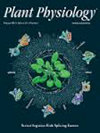
-
國際分子科學(xué)雜志
International Journal Of Molecular Sciences
中科院 2區(qū) JCR Q1
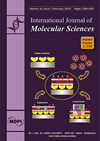
-
納米生物技術(shù)雜志
Journal Of Nanobiotechnology
中科院 1區(qū) JCR Q1
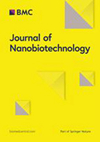
-
植物科學(xué)前沿
Frontiers In Plant Science
中科院 2區(qū) JCR Q1
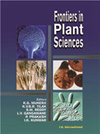
-
分子生物學(xué)的當(dāng)前問題
Current Issues In Molecular Biology
中科院 3區(qū) JCR Q3
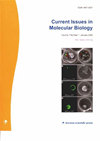
-
氧化醫(yī)學(xué)和細(xì)胞壽命
Oxidative Medicine And Cellular Longevity
中科院 2區(qū)
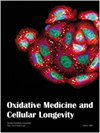
-
世界微生物學(xué)與生物技術(shù)雜志
World Journal Of Microbiology & Biotechnology
中科院 3區(qū) JCR Q2
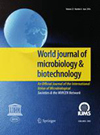
-
生物信息學(xué)
Bioinformatics
中科院 3區(qū) JCR Q1
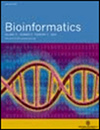
免責(zé)聲明
若用戶需要出版服務(wù),請聯(lián)系出版商:1160 BATTERY STREET, STE 100, SAN FRANCISCO, USA, CA, 94111。